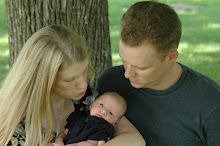 We started by picking the peach tree in the backyard. How do we know it's a peach tree (since we've only been here 3 months?)
We started by picking the peach tree in the backyard. How do we know it's a peach tree (since we've only been here 3 months?) The ground is absolutely covered with peach pits around it! It doesn't look very healthy, so we're crossing fingers in the spring it surprises us and in the summer we have fruit.
The ground is absolutely covered with peach pits around it! It doesn't look very healthy, so we're crossing fingers in the spring it surprises us and in the summer we have fruit.Matthew and I read Handbook of Nature Study, by Anna Comstock, pgs 618-622. This is the chapter on trees. Then Matthew and I started to answer the questions on pg 624.
These are our answers:
1. Our tree's trunk divides into branches.
2. There is branches because "twigs help it grow" according to Matthew.
3. The twigs at the end of branches are smooth or fine.
4. The bark on the branches are a lighter gray then the bark on the tree.
5. The ends of the twigs are reddish, which is different from the branches.
 Then the book asks you to look at a log, stump or slab. Well, we didn't have access to that, so instead we looked at the branch that Matthew managed to crack right off the peach tree. See, I told you it wasn't so healthy!
Then the book asks you to look at a log, stump or slab. Well, we didn't have access to that, so instead we looked at the branch that Matthew managed to crack right off the peach tree. See, I told you it wasn't so healthy!6. Well, if there was heartwood in this branch, it was hard to see from the uneven break. It's possible that some of this was sapwood.
7. We could see rings of growth and talked about how some of them were thicker then others, which I believe means the difference in water and good minerals in different years.
8. Since we didn't have a stump, we don't know how old the tree is, but we counted at least 8 rings I believe.
 We cut a twig off the peach tree and the plum tree out front. I believe we did this 5 days ago and so far nothing from either of them.
We cut a twig off the peach tree and the plum tree out front. I believe we did this 5 days ago and so far nothing from either of them.9. The buds are sortof a greyish-white color.
10. The buds look sortof of downy, but really some of them seem a little dried up. I don't know if that's because the super cold weather sort of froze them or if this is just the way they are.
11. The buds alternate all the way up the twig.
12. We were able to see the scar from last years leaves quite plainly. (I was really amazed, I have never studied a twig so close!)
13. This question is to be continued when (or if) the buds bud.
The last question concerns what birds we can see visiting in the tree. It's in the back corner of the yard, so we can't see what birds visit it as often. We have caught a wren, ring necked dove and several varieties of sparrows in it. It suggests that we tie beef fat to it to attract more, but since we are already feeding birds nearby, we'll pass for now. :)
On the Handbook of Nature Study blog, Barb also recommends looking for seeds from different trees. As some of our older posts suggest, we are already working on that. We have, I believe, 4 different kinds of acorns now, along with nuts, pods, and seeds from other trees and bushes. She also suggests studying and comparing different twigs. We haven't compared the peach and plum twig yet, but they definitely are different in color and design.
Update: We have a new post updating the twigs process here.




4 comments:
You two are really learning a lot by being so closely observant as the nature study suggests! What is that white stuff on the broken off end?
I'm really not sure, but I bet it has something to do with the fact that a 34 lb boy could break it off!
I had to laugh about the beef fat. :)
You could use a suet feeder instead if you wanted to try that. We have one for the first time this year and it has been a big hit with our neighborhood birds.
You should get some results with the peach and plum twigs....make sure they are in a warm window with plenty of light.
Thanks so much for sharing your study with the OHC. Great job with this challenge.
Barb, we have a suet feeder, so that's why I declined! Our birds love it too. We ran out this morning, so we filled it with so stale bread so our dog wouldn't eat it instead.
Post a Comment